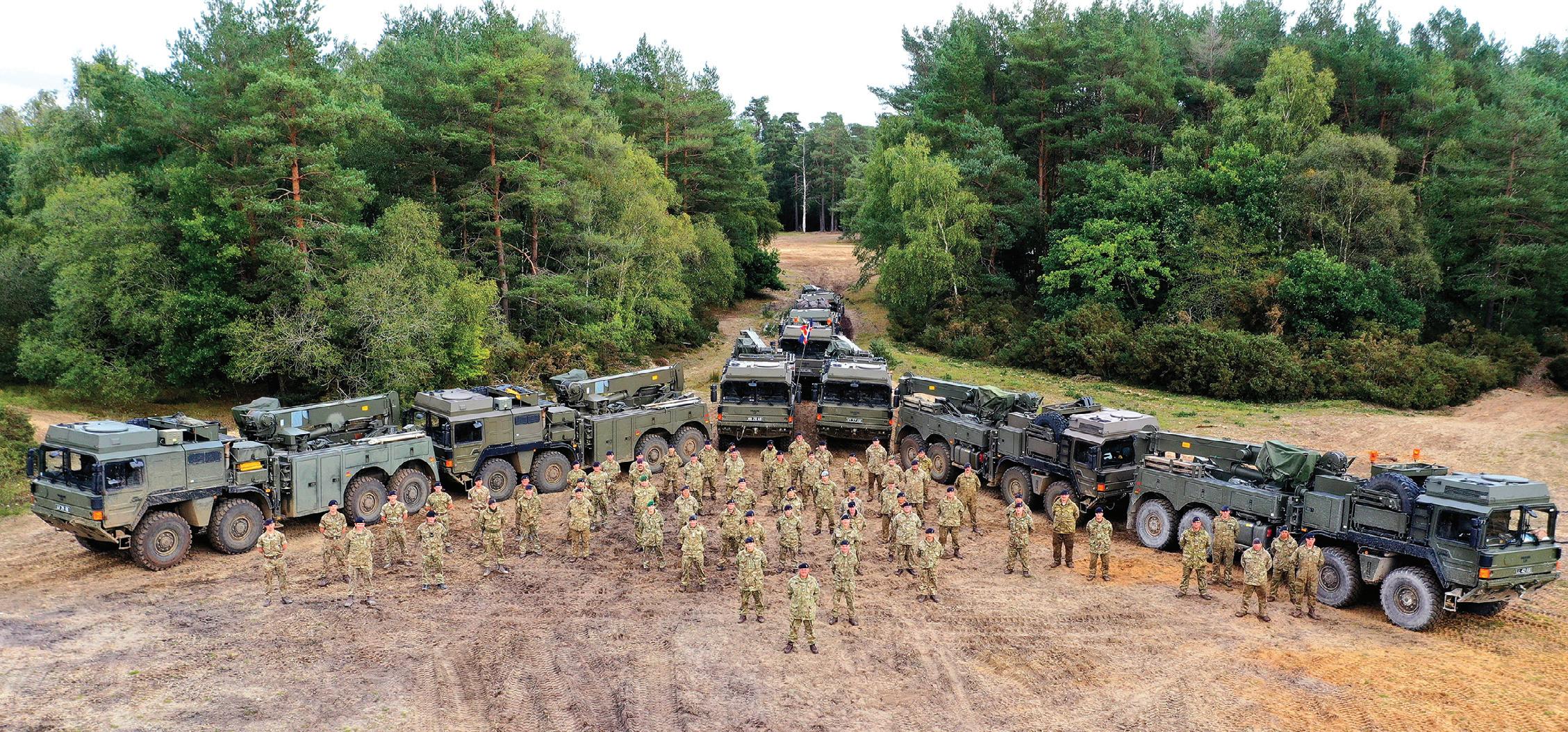
6 minute read
Ex IRON PULL
103 Bn REME
Exercise IRON PULL
Advertisement
There might be a pandemic happening around them but 103 Bn REME wasn’t going to let that stop them. Capt Mark Nicholls shares how a Recovery Technical Training Exercise went ahead, thanks to flexibility and a ‘can do’ attitude.
OC’s foreword
Maj Garry Patey
It is not often as an OC that you are tasked to deliver a Recovery TTX during a global pandemic. However, having commanded 133 Rec Coy for 18 months I am acutely aware that Reserve Soldiers can operate and deliver effect in challenging situations. Our contribution to Op RESCRIPT demonstrated this, as has our ability to adapt our training throughout the height of lockdown and beyond.
My HQ team and I are comfortable operating in challenging situations, but it is no secret that the escalating COVID-19 situation tested all elements of our collective Command and Control. Notwithstanding, it is the innovative approach that we have developed that enabled the exercise not only to go ahead but to be delivered to the highest of standards. The team performed excellently throughout and, as our Reservists return to their ‘day jobs’ and the Regular soldiers to their Units, they should be rightly proud of what has been achieved during Exercise IRON PULL. Arte et Marte
The deployed VLE under canvas
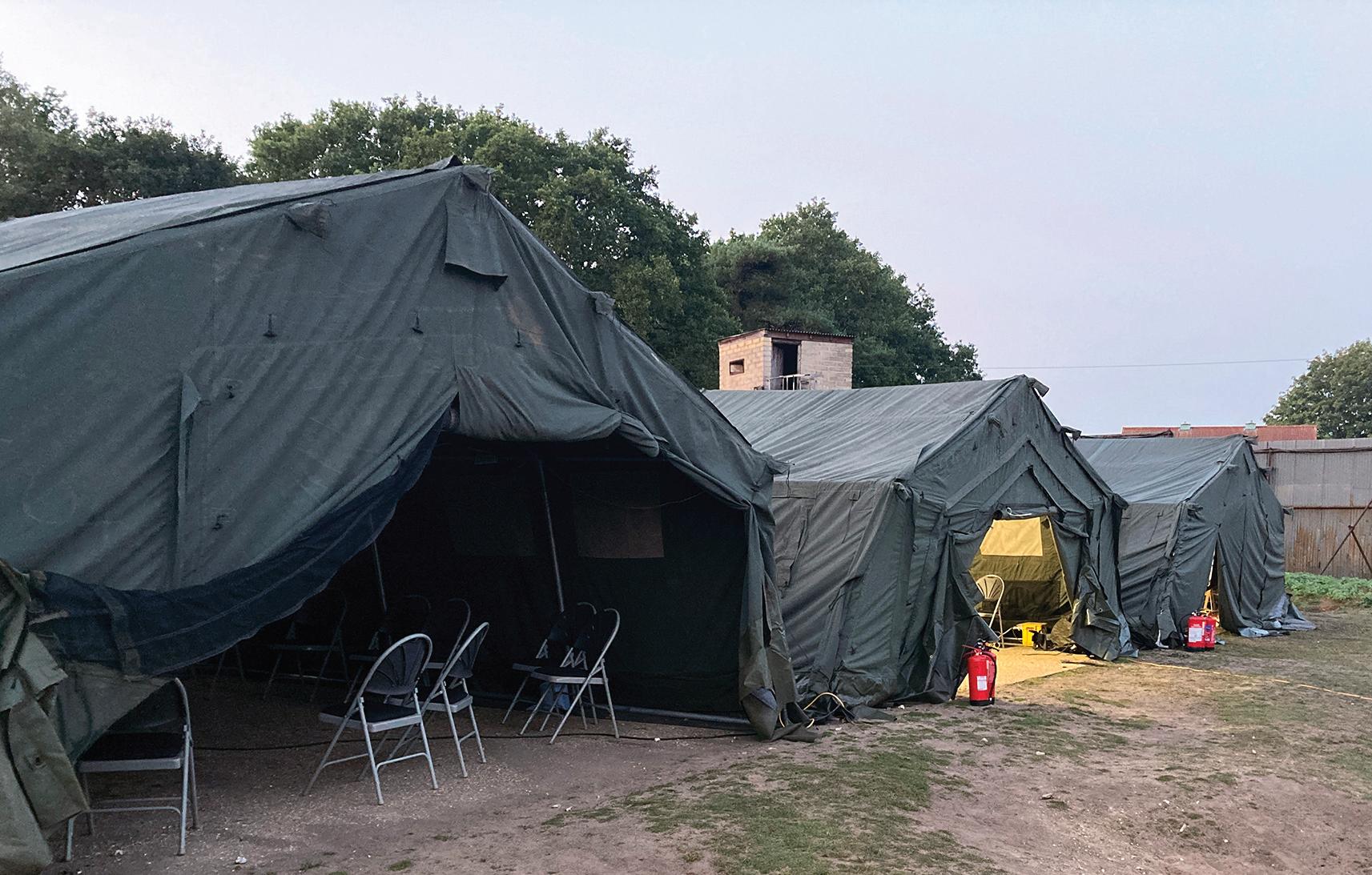
Technical training during COVID-19
103 Bn REME delivered Exercise IRON PULL 20, a Recovery Technical Training Exercise (TTX), at Longmoor from 18 September 2020 through to 3 October. In normal circumstances this would be a challenging and hugely valuable exercise from both a planning and execution perspective. However, the ongoing COVID-19 situation presented further constraints. It is testament to the flexibility and ‘can do’ attitude of all that 103 Bn REME were able to deliver a challenging exercise whilst adhering to the Force Health Protection measures - a fine example of Regular and Reserve integration delivering effect and building capability.
The exercise was an opportunity for Recovery Mechanics from across the Corps to build upon trade ability, develop theoretical and practical skills setting the conditions for trade progression. Importantly it enabled Reserve soldiers to work alongside their Regular counterpart; true of both students and instructors.
As with all training at present, protecting the force through the FHP measures endured as the primary consideration. With the exercise’s fate changing up until the last safe moment, the planning team were doing their very best to ensure that once given authority to proceed, STARTEX was viable. As with all plans, things changed and for the first week the accommodation was in Longmoor’s SF Patrol base. Not what was expected. However, in the spirit of ‘by skill and by fighting’ the deployed troops adapted quickly to the situation. Accommodation was sorted in accordance with FHP measures and the Virtual Learning Environment (VLE) was configured, at short notice, in 18 x 24 tents.
Similar challenges were experienced throughout the exercise and a special mention must be made to WO2 Richards and WO2 Parish (both 118 Rec Coy, 103 Bn) – they anticipated issues, mitigated risks and essentially kept the exercise going so that the technical training could continue.
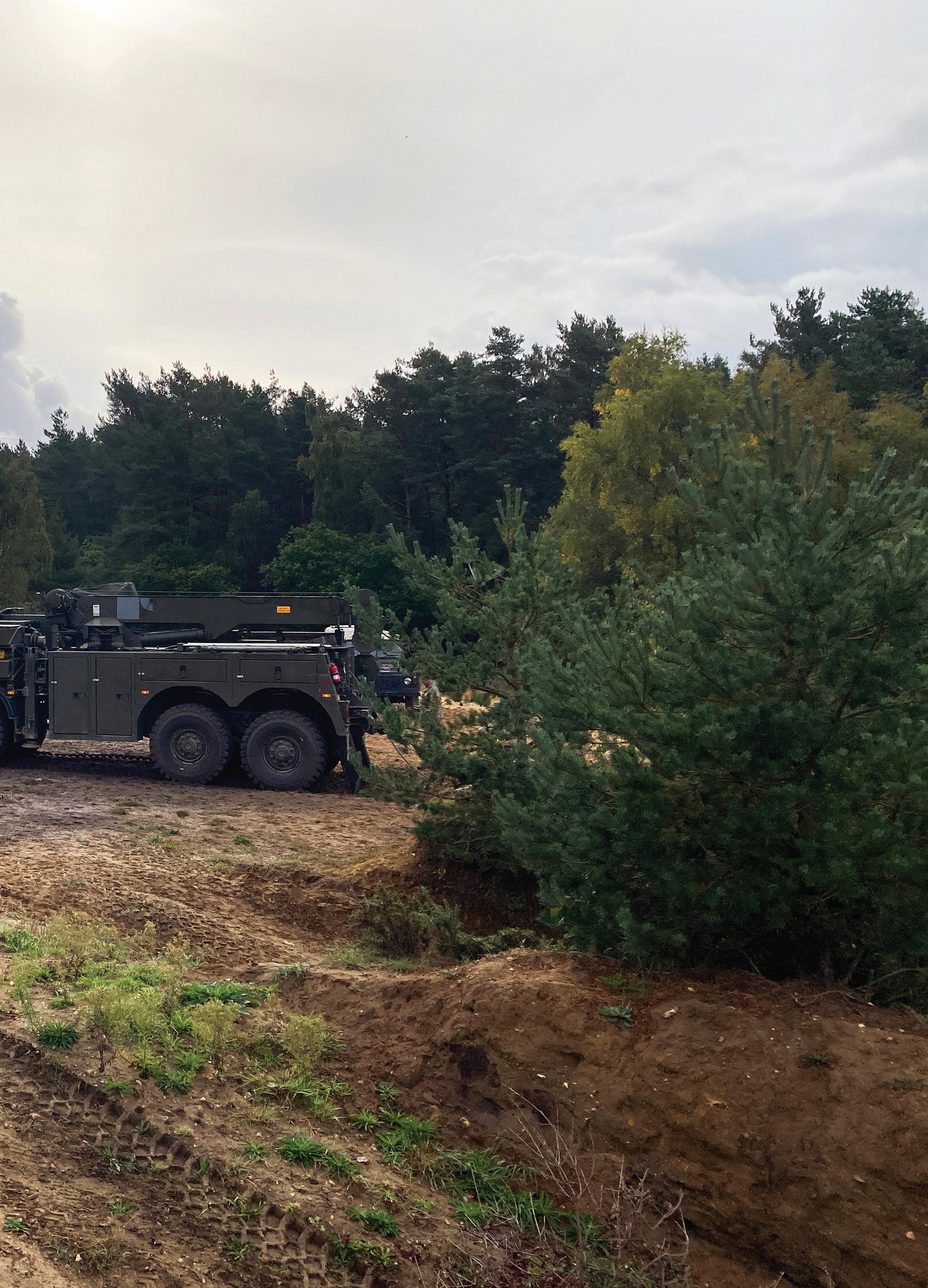
Regular / Reserve Training Integration
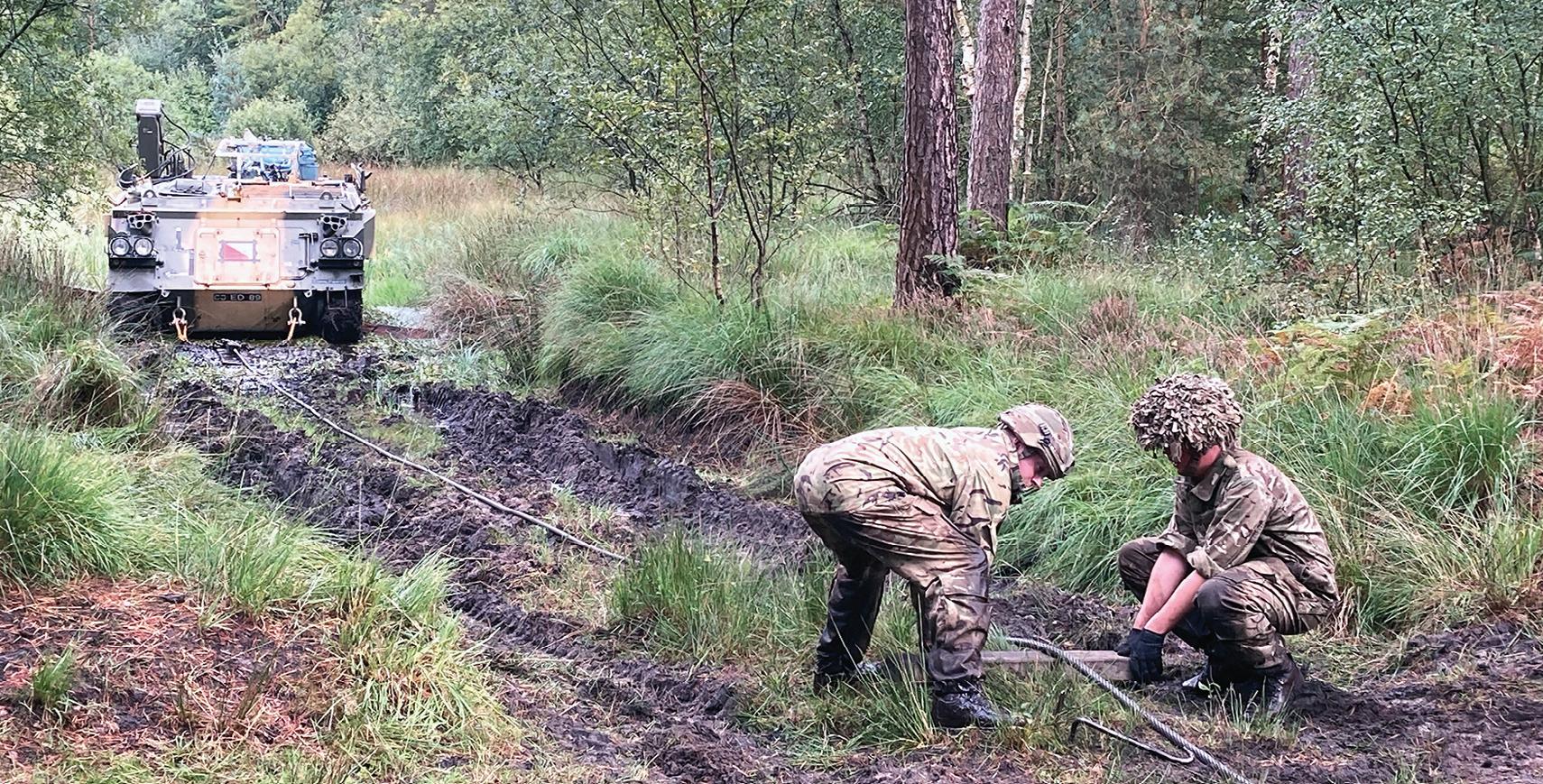
A key success of Ex IRON PULL was the Regular and Reserve integration. Of the students and instructors, the ratio was broadly 50/50 with the exercise enablers and Real-Life Support being Reserve led.
All troops were Task Organised, first into ‘bubbles’ of no more than six and then into training syndicates based upon their needs. Three streams of technical training were delivered; Class 4-3, focussed on the Reserve cohort, Class 3–2, both SVRs on the move continuation and upgrader training, and Class 2-1 continuation communications link back to DSEME, ensuring that all theoretical training. The latter two consisted of both Regular and Reserve training material was current. Moreover, this allowed a step change personnel. in ‘blended learning’, assured theoretical training that was conducted
The VLE was deployed forward and this enabled a real-time on the heath followed by practical demonstration. This operating concept must endure for future training. Having operated remotely for many months and with FHP measures likely to continue this offers an excellent approach to training, particularly in the Reserve space that should be exploited by the Recovery Mechanic CEG and Corps more broadly. The calibre of the students was particularly high and this was true across all training streams. After much debate, the instructors settled upon those worthy of an award. Cfn Griffin was awarded ‘Best 3-2 Student’ and Cpl Walker ‘Best 2-1 Student’. The Commanding Officer presented both students with their certificates in recognition of Recovery training happened in bubbles of six or less their achievements.
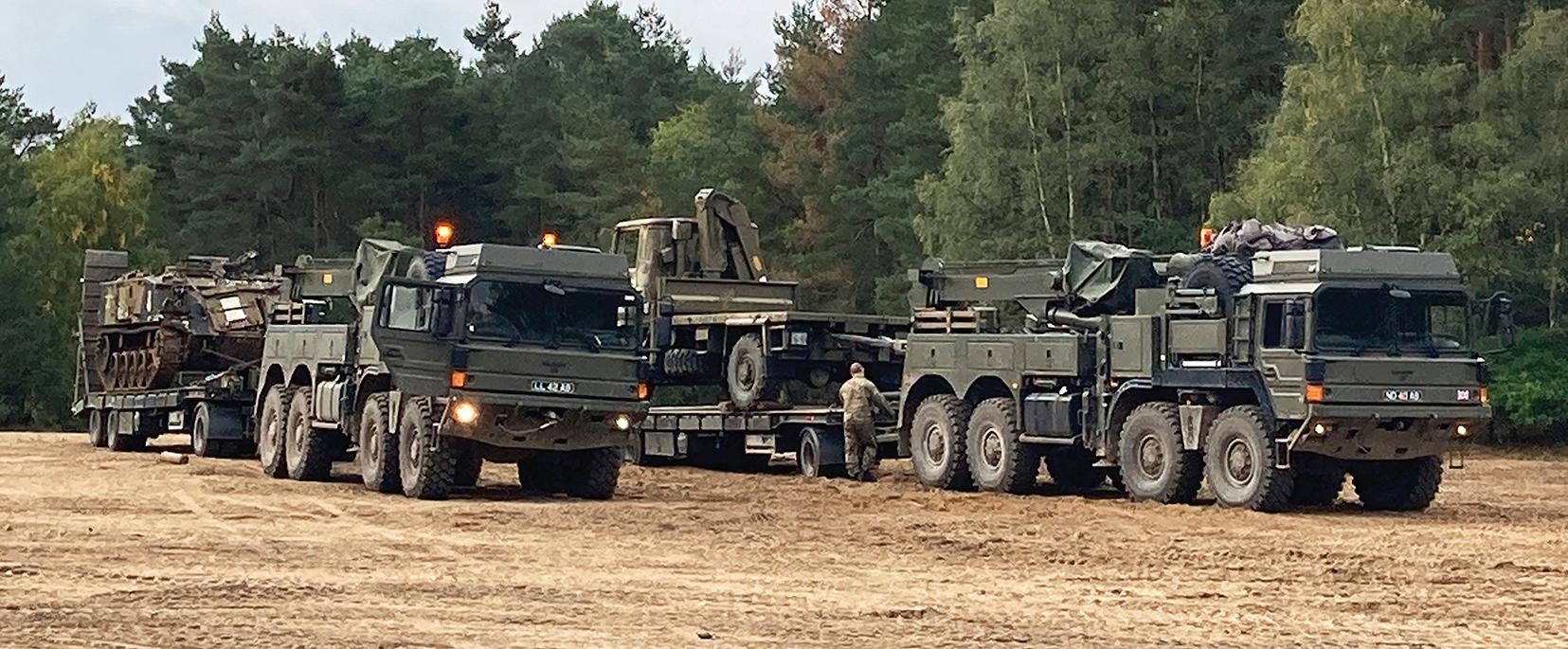
Cfn Griffin receiving his award for ‘Best 3-2 Student’ Cpl Walker receiving his award for ‘Best 2-1 Student’
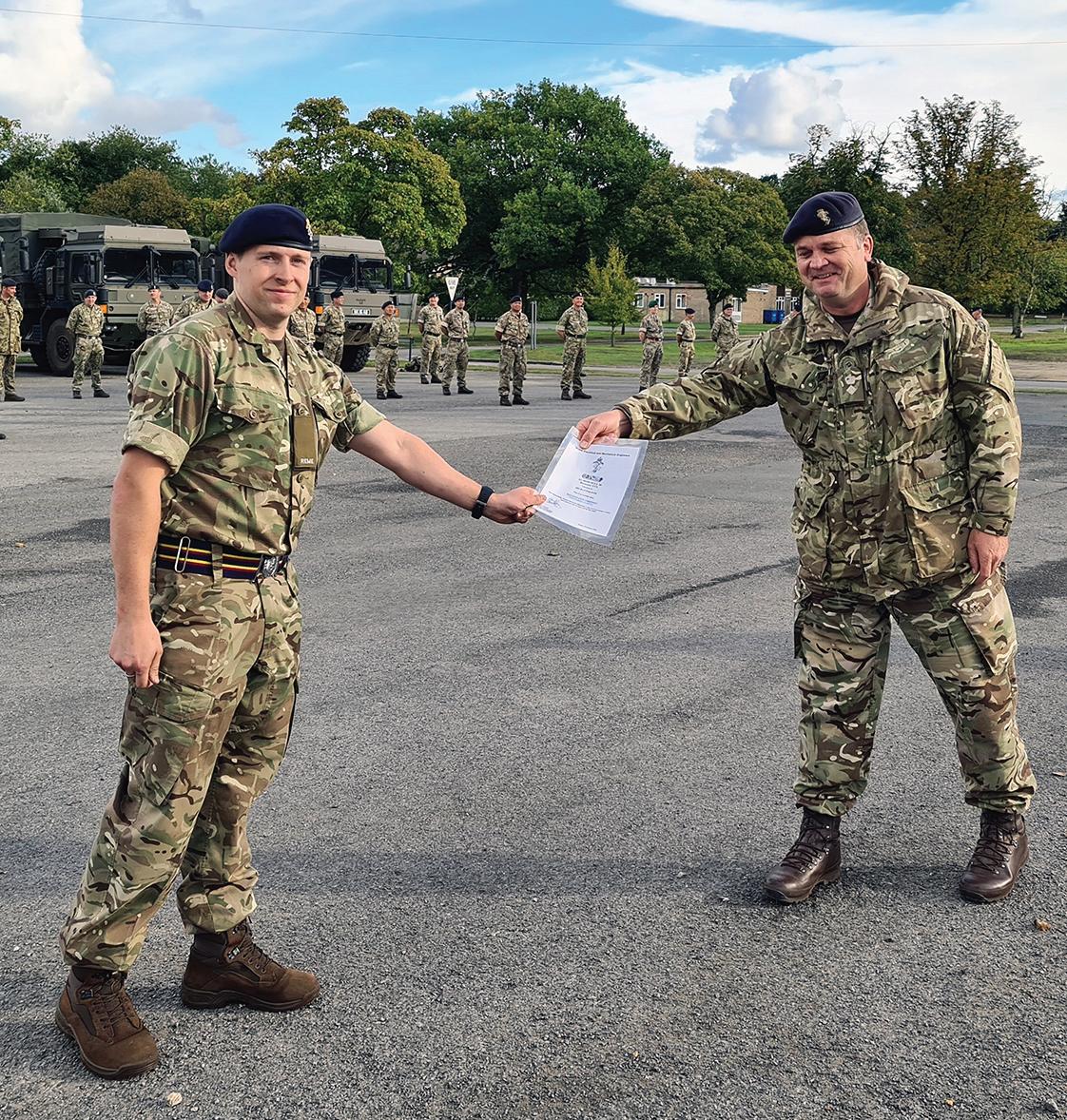
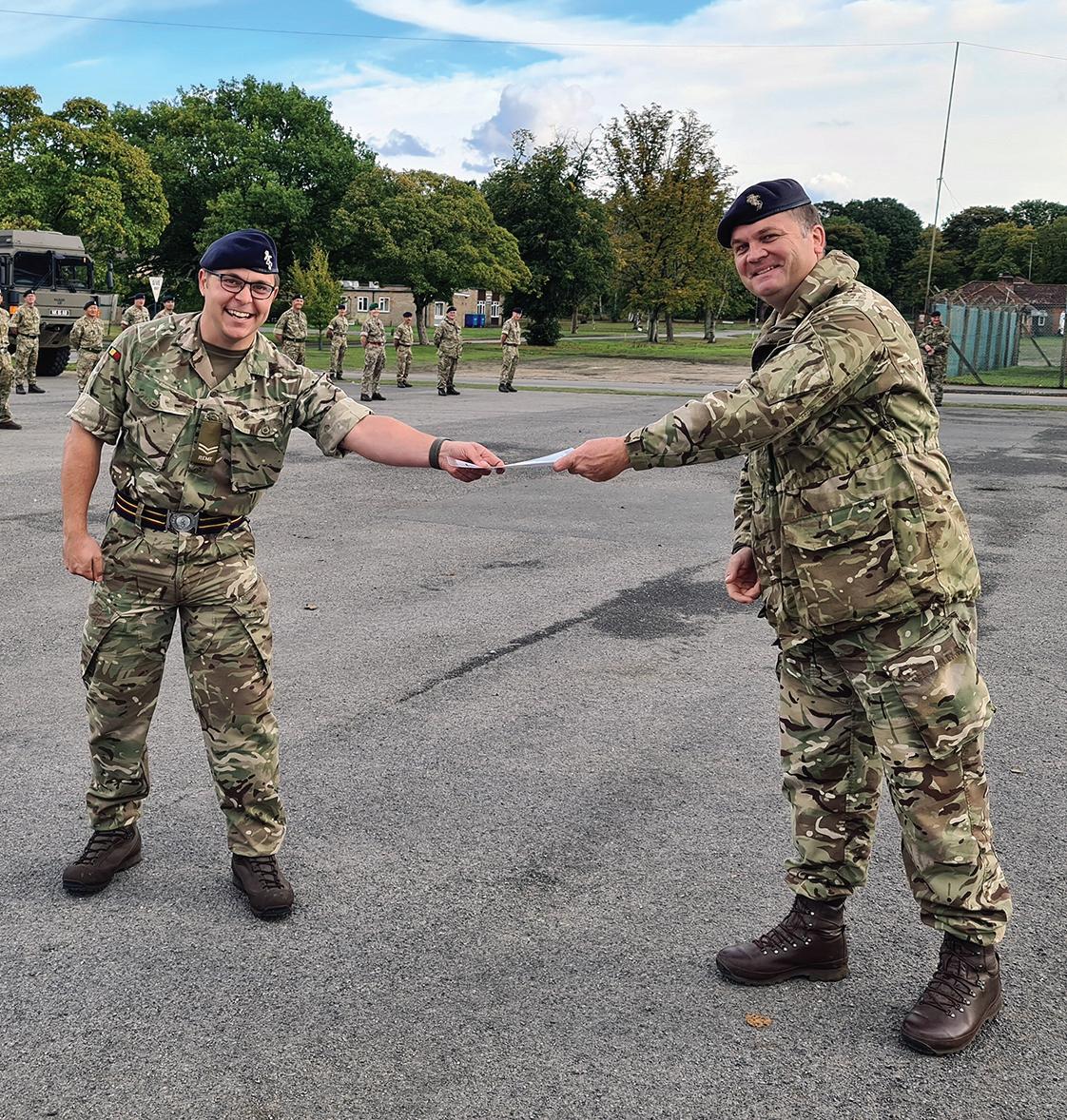
Real Life Support
As with all exercises it is often those providing Real-Life Support who get overlooked; the deployed Fitter Section, MT and Stores all played a significant part in enabling the exercise. These functions were all Reserve led and this presented an excellent training opportunity to further build competence and capability. The Fitter Section and MT maintained high levels of vehicle availability throughout, demonstrating the ability to operate using JUDs and MJDI in the deployed space. The CQMS function was tested significantly during Ex IRON PULL largely due to the evolving COVID-19 situation. The ability for a relatively small G4 team to facilitate the exercise must not be overlooked and SSgt Morse (CQMS, 133 Rec Coy) deserves a special mention in the work she and her team conducted over the course of the exercise.
Visitors
It was a privilege that Ex IRON PULL attracted such interest and, importantly, that the scheduled visits enabled senior officers to meet the men and women, both Regular and Reserve, deployed. DComd 3 (UK) Div, Comd 101 Log Bde, DComd 101Log Bde and Col REME Reserves all visited the exercise and this was sequenced such that adherence to FHP measures endured. As ever, the opportunity for engagement with Soldiers is critical and even more so with the restrictions that have been imposed for some time. With Recovery tasks ongoing throughout the visits, DComd 3 (UK) Div was also able to participate in a Tirfor Winch race which, whilst demonstrating some of our Recovery capability, allowed him to understand the utility of the Myzone initiative. This has enabled Reserve units to monitor fitness throughout ‘lockdown’ and train smarter in order to maintain Force Elements at Readiness.
Socially distanced meal times
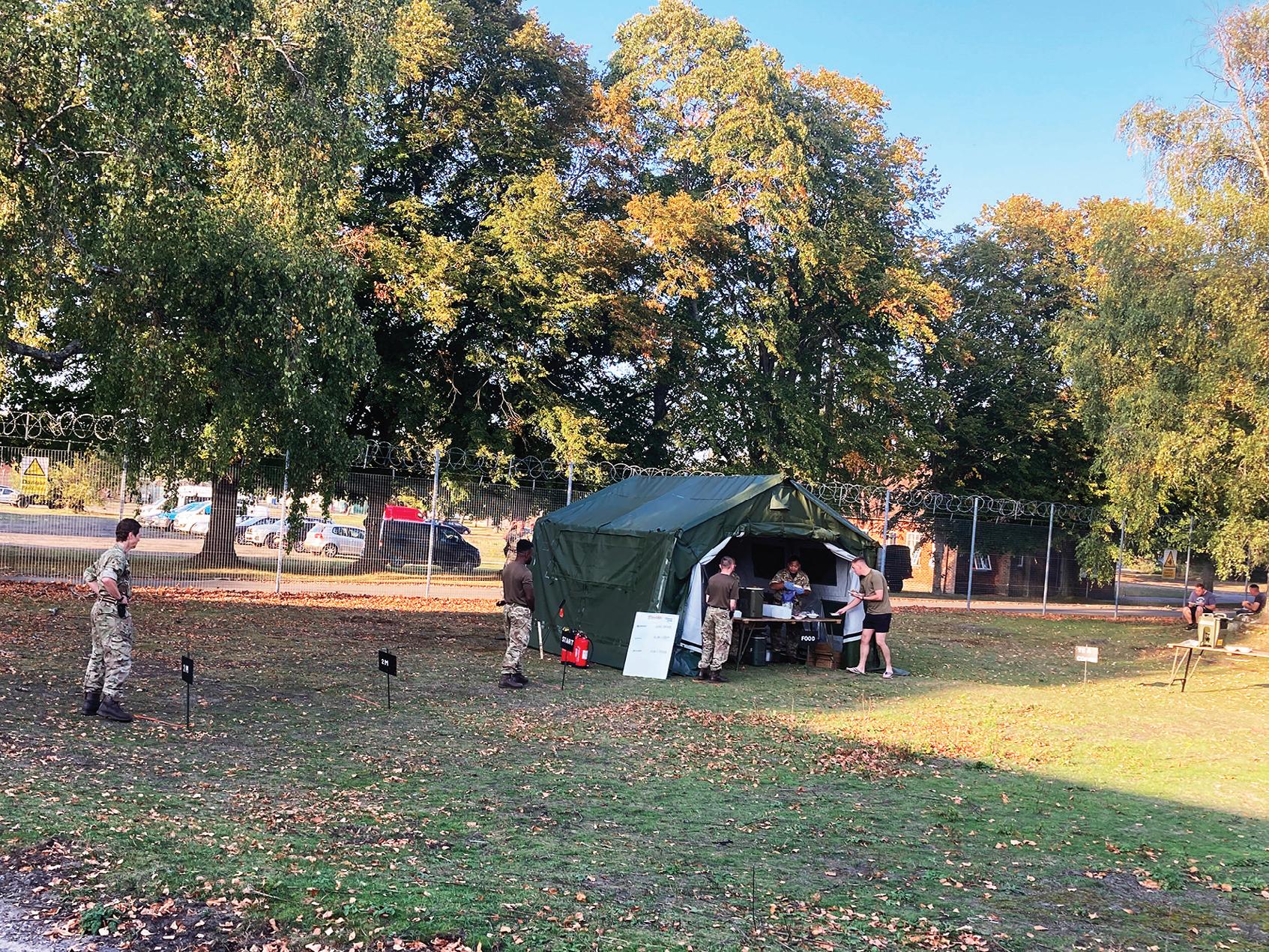
Operating ‘within boundaries’
Exercise IRON PULL 20 nearly didn’t happen. Set against the backdrop of COVID-19 it was testament to the planning, flexibility and execution employed by all members of 103 Bn REME that enabled this capability generating exercise to occur. Training Recovery Mechanics from across the Corps it was a clear demonstration of Regular and Reserve integration.
Leveraging technology in the deployed space has further anchored the VLE as a resource that must be exploited – the constraint of not having real estate does not render online, theoretical training untenable. Like many things ‘lockdown’ has led to a paradigm shift in what is possible and how it is executed. With the training landscape somewhat unknown due to COVID-19, 103 Bn REME will continue to operate ‘within boundaries’, building capability and delivering effect.
Ex IRON PULL
